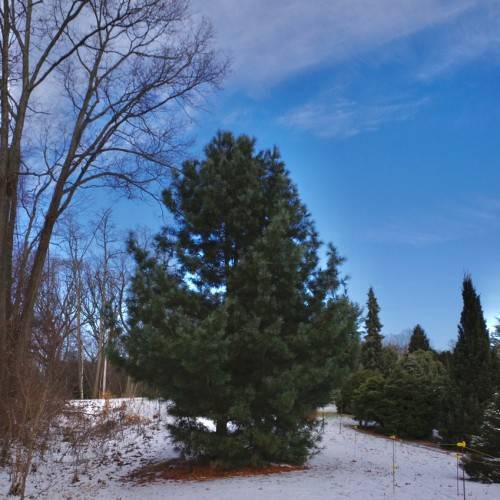
Korean pine
Pinus koraiensis
Cycle:
Perennial
Watering:
Average
Hardiness Zone:
4 - 7
Flowers:
Flowers
Sun:
Full sun
Cones:
Yes
Edible:
Yes
Leaf:
Yes
Growth Rate:
High
Maintenance:
Moderate
Drought Tolerant:
Yes
Salt Tolerant:
Yes
Care Level:
Medium
watering
Korean pine should be watered thoroughly and regularly to keep the soil moist, but not saturated. The general rule is to water the plant deeply once or twice per week depending on the season and climate. During warm, dry weather they may need to be watered as often as every 2 to 3 days while in cooler weather, watering every 5 to 7 days should be sufficient. To keep your pine's soil most, check the soil around the roots weekly to determine if it needs water. If it is dry about an inch down, it's time to water.
sunlight
Korean pine (Pinus koraiensis) grows best in partial shade and full sun. In optimal conditions, the tree should receive 8-10 hours of direct light each day. For optimal growth, Korean pine should enjoy full morning sun, then either partial shade or dappled shade during the afternoon. During summer months, the tree should have some protection from intense afternoon sun in order to avoid leaf scorch. In winter, Korean pine should receive at least 6-7 hours of full sun per day.
pruning
Pruning Korean pine (Pinus koraiensis) is best done in late winter or early spring while the plant is dormant. You should avoid pruning during summer or fall as this may cause the new growth to be damaged by too much sunlight or cold temperatures. For light pruning, remove only the tips of vigorous branches and never prune more than 1-fifth of the branches. For more severe pruning, remove large branches back to their collar, or the area where the branch meets the trunk. Prune weak or dead branches to the trunk or main branch. Prune main branches carefully to keep the natural shape of the plant and avoid removing too much in 1 area. Finally, remove any crossed branches and thin the foliage to allow air and light to pass through.
